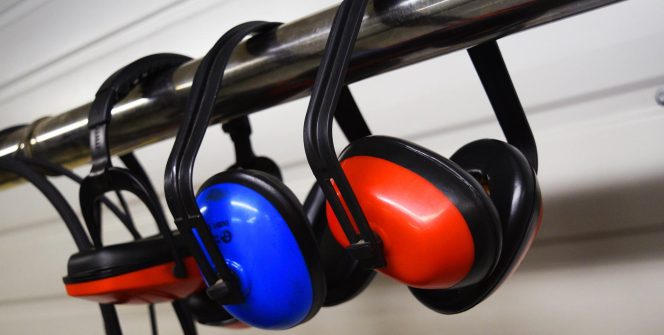Noise is a pervasive hazard in the workplace, whether an active construction environment or small industrial outfit as well as car garages. Noise can be generated by all manner of sources, and can present a real danger to personal health alongside the many other risk factors found in the workplace.
It is an employer’s legal duty to provide the right personal protective equipment (PPE), and comprehensive training in its correct usage, in order to protect workers against workplace hazards as a ‘last resort’. Failure to do so can lead not only to personal injury on the part of the worker, but also to punitive measures such as an unlimited fine. Hearing is just as important to protect as any conventional health and safety concern, and measures should be taken to protect ears in loud environments – but what exactly are the risks, and how can they be mitigated?
Excessive Volume, and its Effects
Excessive volume is difficult to define absolutely, being related to exposure time as well as sheer volume. While particularly loud noise sources can cause immediate damage to hearing, such as plane engines and explosions, hearing damage can also be caused by continuous exposure to relatively quieter sounds.
According to the RNID, the threshold for danger to hearing occurs at around 85dB – the sound of a food processor, or of urban rush hour traffic. The amount of time you can be safely exposed to sounds above 85dB increases significantly the louder the sound gets. Prolonged exposure to loud sounds can result in the loss of high-frequency hearing sensitivity, as well as earache and eventual deafness.
Noise Risks in the Workplace
Certain workplaces and vocations are obvious candidates for the provision of protection measures; for example, engineering work in large industrial environments, around loud engines and in concert halls where loud sounds are produced extensively. However, there are many workplaces which carry hearing damage risk from prolonged exposure.
Contractors carrying out roadworks could damage their hearing from constant exposure to road noise, while those working in late night hospitality could suffer as a result of the ambient volume in a packed venue.
Mitigating Risk
The predominant ways to mitigate risk when it comes to hearing include assessment and prevention. Exposure to loud sounds should be limited where possible, with workers instructed to work in shifts so as not to fatigue their hearing. PPE in the form of ear plugs or ear defenders should be provided free of charge by an employer, but as a last resort where preventive systems fail.
Most importantly, comprehensive risk assessments must be carried out in order to identify and measure potentially dangerous noise sources. Installing a decibel meter in the workspace to monitor fluctuating volumes can also provide workers with a point of reference for the volume in the space, allowing them to procure the appropriate protection in the event of a volume increase.

Leave a Reply